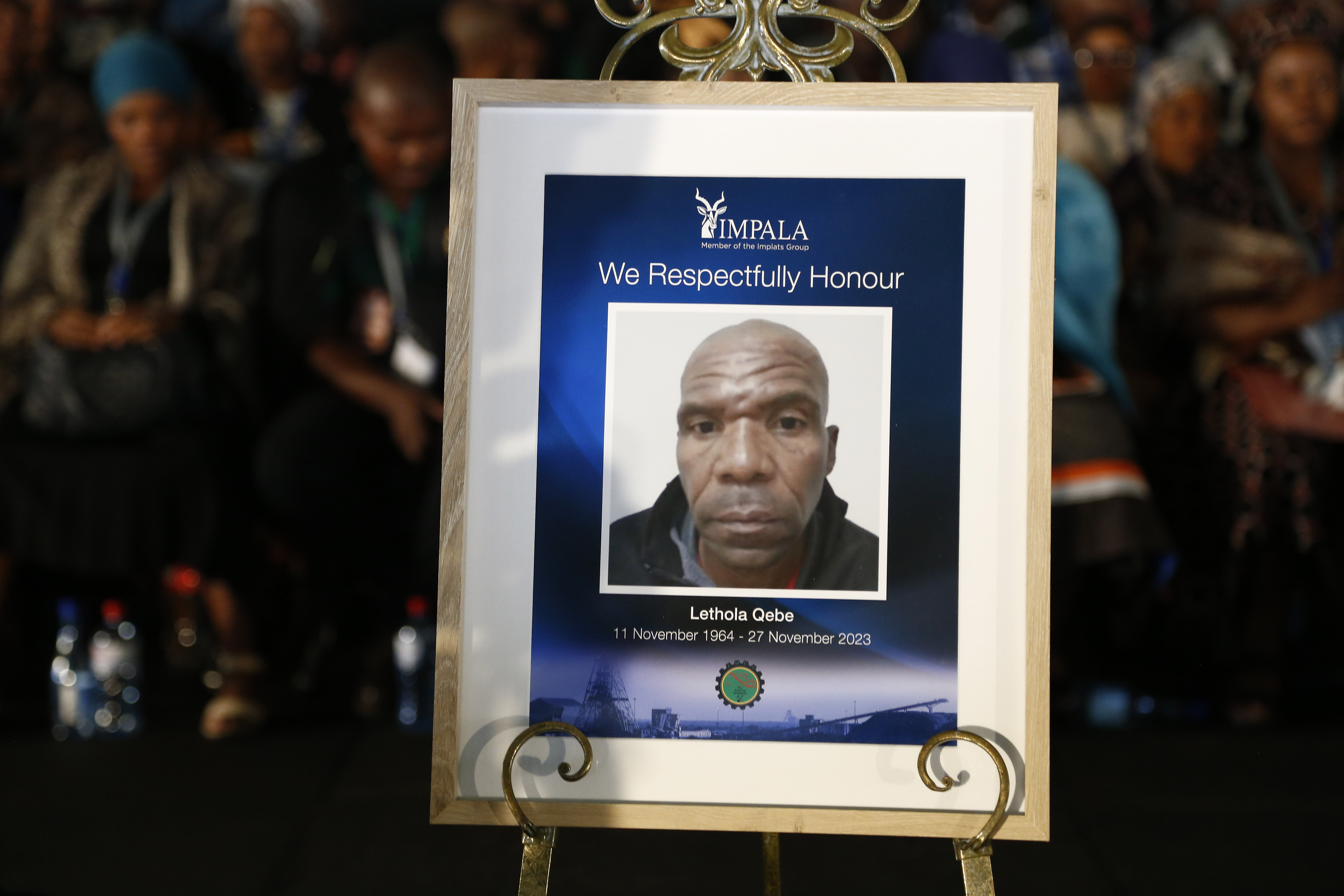MIGRANT LABOUR LEGACY ANALYSIS
Implats disaster another mining tragedy for the people of Eastern Cape and Lesotho

The conveyance lift disaster at Impala Platinum, which killed 13 miners, will be most acutely felt in the Eastern Cape and Lesotho. This is a legacy of the migrant labour system. While no longer a tool of apartheid exploitation and in decline, the rural villages from which miners have long been drawn are once again bearing the burden of industrial tragedy.
Of the 13 miners killed on 27 November in the conveyance cage disaster at Impala Platinum’s (Implats’) Rustenburg operations, eight hailed from the Eastern Cape and three from Lesotho, according to details the company provided on Wednesday ahead of a memorial service to honour the deceased. (See related story).
The Eastern Cape – notably the former Transkei – and Lesotho are known in South Africa’s mining sector as “labour-sending areas” or, increasingly, “former labour-sending areas”.

An emotional family member is aided by ushers at a memorial service held at 2 Shaft, Simunye Hostel sports grounds on 6 December 2023 in honour of the 13 employees who died in the Impala Platinum Rustenburg tragedy on 27 November 2023. (Photo: Felix Dlangamandla)
The 13 men who died were far better paid than their grandfathers and fathers who toiled in South Africa’s mines, and – in a withering irony – took that lethal cage down to tunnels which are far safer than they were in their forefathers’ day.
This underscores the shocking nature of this tragedy.
The people of the Eastern Cape and Lesotho have for decades lost loved ones in South Africa’s mines, but this grim toll is a fraction of what obtained when the migrant labour system was a tool of industrial exploitation.
For decades, men from the Bantustans and neighbouring states provided a vast reservoir of migrant labour that was ruthlessly exploited by South Africa’s mining industry.
For over half a century, the real wages of migrant black mineworkers actually declined.
Subsistence African farmers lacking education, in rural regions subjected to growing poverty – not least because of falling wages – and coerced in numerous ways, represented ripe fruit to be plucked for profit.
At its peak, almost 500,000 foreign mineworkers were recruited to South Africa’s gold mines. This has long since been reduced to a trickle.
“At about 35,000 of 460,000 employees, the number of migrant workers from neighbouring countries is a quarter of the levels a decade ago,” the Minerals Council SA said last year. The numbers from the former Bantustans have also declined, though this data is harder to pin down.
But older, conventional and labour-intensive operations such as Implats’ Rustenburg mines still rely heavily on workers from the Eastern Cape and Lesotho, judging from the demographic profile of the men who were killed last week.
To its credit, the mining sector has been undoing the more pernicious legacies of the migrant labour system in the face of government regulations, union activism and investor concerns in an age when ESGs – environmental, social and governance concerns – have taken corporate boardrooms by storm. (On the other hand, the decline of the migrant labour system has also unleashed a social apocalypse, fuelling the rise of the Zamas and rampant cattle theft on the Lesotho border.
Read more in Daily Maverick: How the twilight of South Africa’s migrant labour system spawned a social apocalypse
Annual pay hikes in line with or exceeding inflation – which have come off a very low base – for over two decades have delivered significant real wage growth to miners; a stark contrast with the decline and stagnation of the past.
Huge strides have also been made in mine safety.
In 2022, fatalities in South Africa’s mining industry hit a record low of 49 for a single year since the start of industrial-scale operations in the late 19th century. The 2023 number is now at least 52 because of the Implats disaster.
Last year’s figure was less than a fifth of the 2003 death toll of 270.
In the 1980s, as many as 800 miners were killed in a single year. The vast majority would have left behind mourning families and friends in the Eastern Cape, Lesotho and Mozambique.
January of this year was the first calendar month on record in which no South African miner was killed on the job.
Read more in Daily Maverick: Minerals Council SA reports industry’s first fatality-free month in January
Fewer miners should, of course, translate into fewer accidents, and overall South Africa’s mine labour force is about half what it was in the 1980s. But more telling measurements, such as “fatality frequency rates” (FFR), measuring deaths per million hours worked, have also fallen sharply in recent years.
This all underlines the scale of the Implats tragedy, which is the worst in decades in South Africa’s deep and dangerous mines.
It is also poignant to note that seven of the 13 men who died were rock-drill operators, or RDOs – five from the Eastern Cape and two from Lesotho.
Historically, this has been the most dangerous underground occupation by a wide margin. These are the miners who use mechanical drills to bore holes into the rock face which are then packed with explosives for blasting.
The danger for these frontline workers lies overhead: Falls-of-ground or FOG accidents long accounted for most of the fatalities inflicted on the men from the Eastern Cape and Lesotho.
FOG fatalities have also been dramatically reduced in recent years because of interventions such as the rolling out of safety netting and bolting, and other initiatives.
Lethola Qebe

Lethola Qebe died in the Impala Platinum’s Rustenburg shaft tragedy. (Photo: Felix Dlangamandla)
Lethola Qebe (59), an RDO from Quthing in Lesotho, had worked for Impala Rustenburg for 22 years. During that time, he would have seen his real wages rise while the prospect of a rock dropping on his head would have fallen.
Qebe would probably have felt safe in the cage that was hoisting him and his colleagues to the surface. He had no doubt taken that ride thousands of times.
But last week, it proved to be a death trap when it suddenly reversed direction into a rapid and fatal descent.
And a Lesotho village is once again in mourning for a fallen son. DM

















 Become an Insider
Become an Insider
Comments - Please login in order to comment.